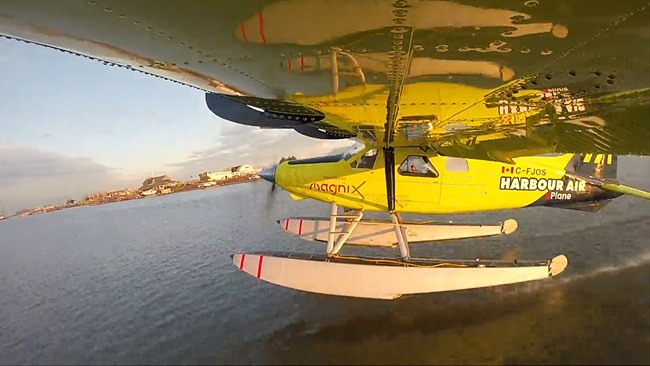Faster, higher, more efficient
Technology achievements of 2018
From ion thrust in the laboratory to supersonic test flights over population centers and a record-breaking glider flight to the uppermost reaches of the atmosphere, 2018 had already been packed with engineering and aeronautical milestones by the time two test pilots strapped into a rocket and flew into space.
The Dec. 13 flight of VSS Unity by Virgin Galactic test pilots Mark “Forger” Stucky and Frederick “CJ” Sturckow marked the first time humans launched from American soil had reached space, at least by some definitions, since 2011. The flight was another step toward British billionaire Richard Branson’s quest to launch paying customers into space (and, in the more distant future, on extremely fast trips around the world) and a fitting coda to a year that saw engineers, pilots, and industry pushing technology to new heights.
Supersonic flight within the atmosphere isn’t easy, either, but companies large and small, including Boeing, General Electric, and Lockheed Martin all reported progress on powerplants and the design and prototype assembly of aircraft that aim to once again transport civilians faster than the speed of sound. Lockheed Martin is working on a NASA contract to build a quieter supersonic aircraft, muffling the boom to a low thump, and also with Aerion to develop a supersonic business jet.
First flights for those speedsters remain in the future, while the Airbus-backed Perlan 2 glider team notched their names in the record books in September soaring to 76,124 feet over the Andes in Argentina. The historic achievement shattered the previous altitude record for gliders, and earned pilot Jim Payne a special honor bestowed by the Society of Experimental Test Pilots.
While not quite as quiet as Perlan 2, perhaps, nor as high-flying, another American engineer’s dream of flying without burning fuel marked progress toward certification and marketability as George Bye made a business case for electric aircraft at the National Business Aviation Association Convention and Exhibition. Bye’s Sun Flyer 2, a two-seat trainer, is on track for Part 23 certification in 2020, followed in 2021 by a four-seat version.
Engineered Propulsion Systems, a startup founded by automotive engineers aiming to bring modern diesel power to aviation, had hoped to complete certification by the end of the year, but the latest word from the company (in a December news release) is that while certification is not yet complete, the funds are lined up to complete the process.
A more futuristic approach to propulsion emerged in November from a Massachusetts Institute of Technology laboratory, where researchers celebrated the first flight of an aircraft with no moving parts, powered across a gymnasium by ionic wind thrusters inspired by science fiction. Using this approach to power aircraft with any payload to speak of is a distant dream, perhaps, but it could make drones fly silently within a few decades.
Ride-sharing giant Uber continued to lead a charge toward a new generation of air transportation, with dozens of companies large and small scrambling to get prototypes in the air and refine designs for flying cars and other takes on personal air transportation, with a few making appearances (including a flight demonstration) at EAA AirVenture in Oshkosh, Wisconsin, in July. AOPA is seeking a seat at the table as NASA assembles stakeholders to chart a course toward door-to-door transportation by electric, vertical takeoff and landing aircraft.
Other efforts to make aircraft more efficient—and quieter—focused on aerodynamic improvements, with NASA and its German counterpart both reporting progress on those fronts.



